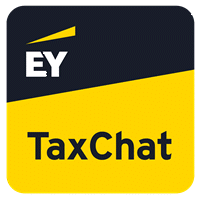Keep in mind that investing involves risk. The value of your investment will fluctuate over time, and you may gain or lose money.
1.
For a distribution to be considered qualified, the 5-year aging requirement has to be satisfied, and you must be age 59½ or older or meet one of several exemptions (disability, qualified first-time home purchase, or death among them).
2.
Fidelity's Planning and Guidance center allows you to create and monitor multiple independent financial goals. While there is no fee to generate a plan, expenses charged by your investments and other fees associated with trading or transacting in your account would still apply. You are responsible for determining whether, and how, to implement any financial planning considerations presented, including asset allocation suggestions, and for paying applicable fees. Financial planning does not constitute an offer to sell, a solicitation of any offer to buy, or a recommendation of any security by Fidelity Investments or any third-party.
3.
No account fees or minimums to open Fidelity retail IRA accounts. Expenses charged by investments (e.g., funds, managed accounts, and certain HSAs), and commissions, interest charges, and other expenses for transactions, may still apply. See Fidelity.com/commissions for further details.
4. There is no minimum amount required to open a Fidelity Go account. However, in order for us to invest your money according to the investment strategy you've chosen, your account balance must be at least $10. The Fidelity Go program advisory fee is calculated and charged at the account level.
5. Fidelity® Wealth Services (FWS) Wealth Management service-level clients must generally qualify for support from a dedicated Fidelity advisor, which is based on a variety of factors (for example, a client with at least $500,000 invested in an eligible Fidelity account(s) would typically qualify). Account investment minimum is $50,000 for FWS. For details, please review the Program Fundamentals available online or through a representative.
6.
The change in the RMDs age requirement from 72 to 73 applies only to individuals who turn 72 on or after January 1, 2023. After you reach age 73, the IRS generally requires you to withdraw an RMD annually from your tax-advantaged retirement accounts (excluding Roth IRAs, and Roth accounts in employer retirement plan accounts starting in 2024). Please speak with your tax advisor regarding the impact of this change on future RMDs.
Fidelity Go® and Fidelity® Wealth Services are advisory services offered by Fidelity Personal and Workplace Advisors LLC (FPWA), a registered investment adviser, for a fee. Portfolio Advisory Services accounts are discretionary investment management accounts offered through Fidelity® Wealth Services. Brokerage services provided by Fidelity Brokerage Services LLC (FBS), and custodial and related services provided by National Financial Services LLC (NFS), each a member NYSE and SIPC. FPWA, FBS and NFS are Fidelity Investments companies.
Fidelity does not provide legal or tax advice. The information herein is general in nature and should not be considered legal or tax advice. Consult an attorney or tax professional regarding your specific situation.
Discount offers valid only when using a link on
Fidelity.com
The third parties mentioned herein and Fidelity Investments are independent entities and are not legally affiliated.
Software products are provided as a convenience to you, and Fidelity bears no responsibility for your use of, and output associated with, such products. The information and products made available to you are not intended to be, and should not be construed as, legal or tax advice or a legal opinion.
Before using this information, review important legal information and terms of use applicable to products, services, and/or information provided or accessed herein by the following companies:
Intuit®
The use of the TurboTax branded tax preparation software and web-based products is governed by Intuit's applicable license agreements. Intuit, the Intuit logo, TurboTax and TurboTax Online, among others, are registered trademarks and/or service marks of Intuit Inc. in the United States and other countries and are used with permission. Intuit is not affiliated with Fidelity Brokerage Services (FBS) or their affiliates. Intuit is solely responsible for the information, content and software products provided by Intuit. Fidelity cannot guarantee that the information and content supplied is accurate, complete, or timely, or that the software products provided produce accurate and/or complete results. Fidelity does not make any warranties with regard to the information, content or software products or the results obtained by their use. Fidelity disclaims any liability arising out of your use (or the results obtained from, interpretations made as a result of, or any tax position taken in reliance on information provided pursuant to, your use) of these Intuit software products or the information or content furnished by Intuit.
EY TaxChat™
Some tax topics or situations may not be included as part of this service. "EY TaxChat" name is owned by EYGN limited and all rights are reserved. "EY TaxChat" is a registered trademark in the United States, United Kingdom, and various other jurisdictions. EY TaxChat and Fidelity Investments are independent entities and are not legally affiliated.
The third-party trademarks and service marks appearing herein are the property of their respective owners.
Before investing, consider the funds' investment objectives, risks, charges, and expenses. Contact Fidelity for a prospectus or, if available, a summary prospectus containing this information. Read it carefully.
Fidelity Brokerage Services LLC, Member NYSE, SIPC, 900 Salem Street, Smithfield, RI 02917



![]() Not sure which IRA is right for you? Check out our Roth vs. traditional IRA comparison.
Not sure which IRA is right for you? Check out our Roth vs. traditional IRA comparison.
Log In Required






